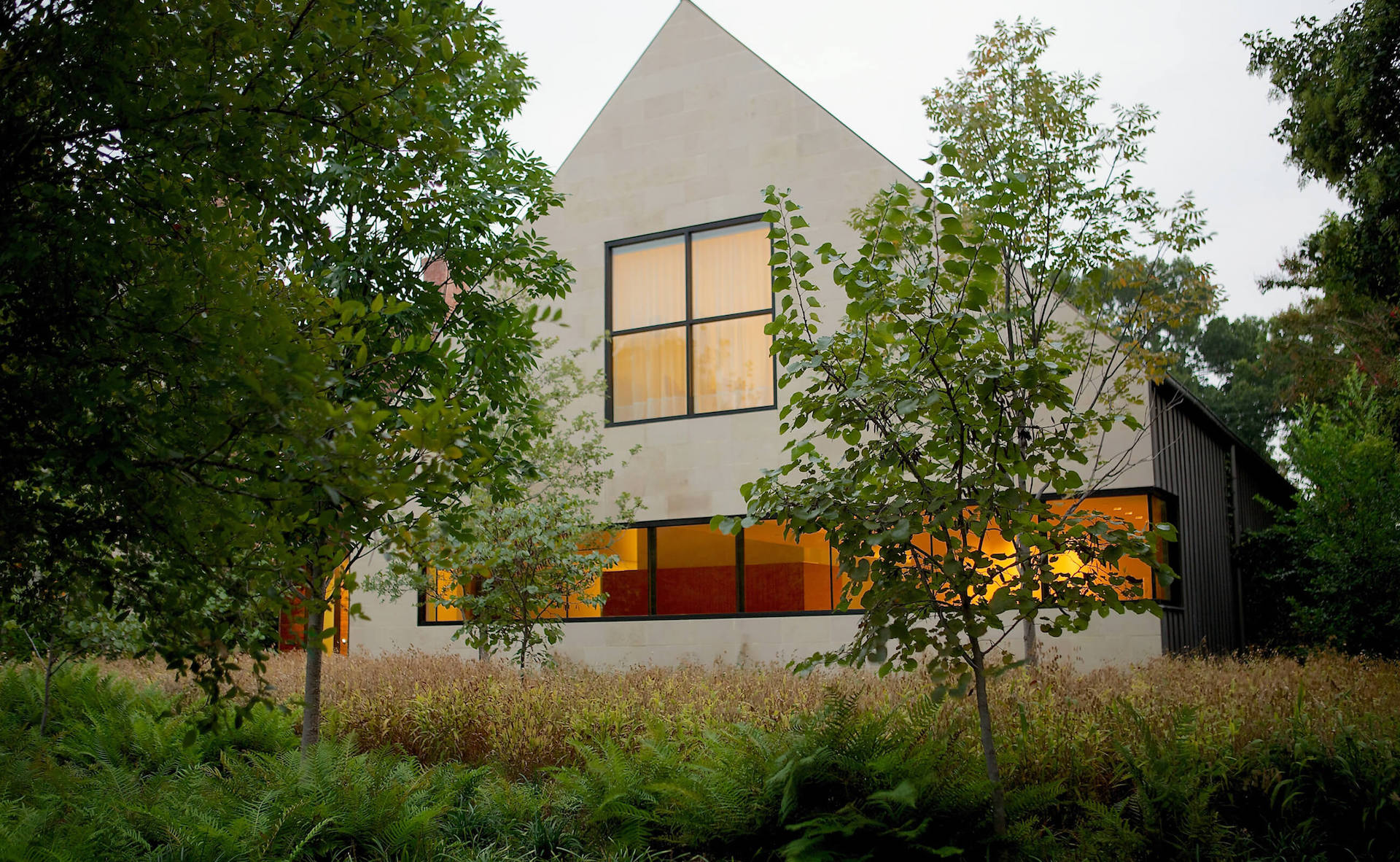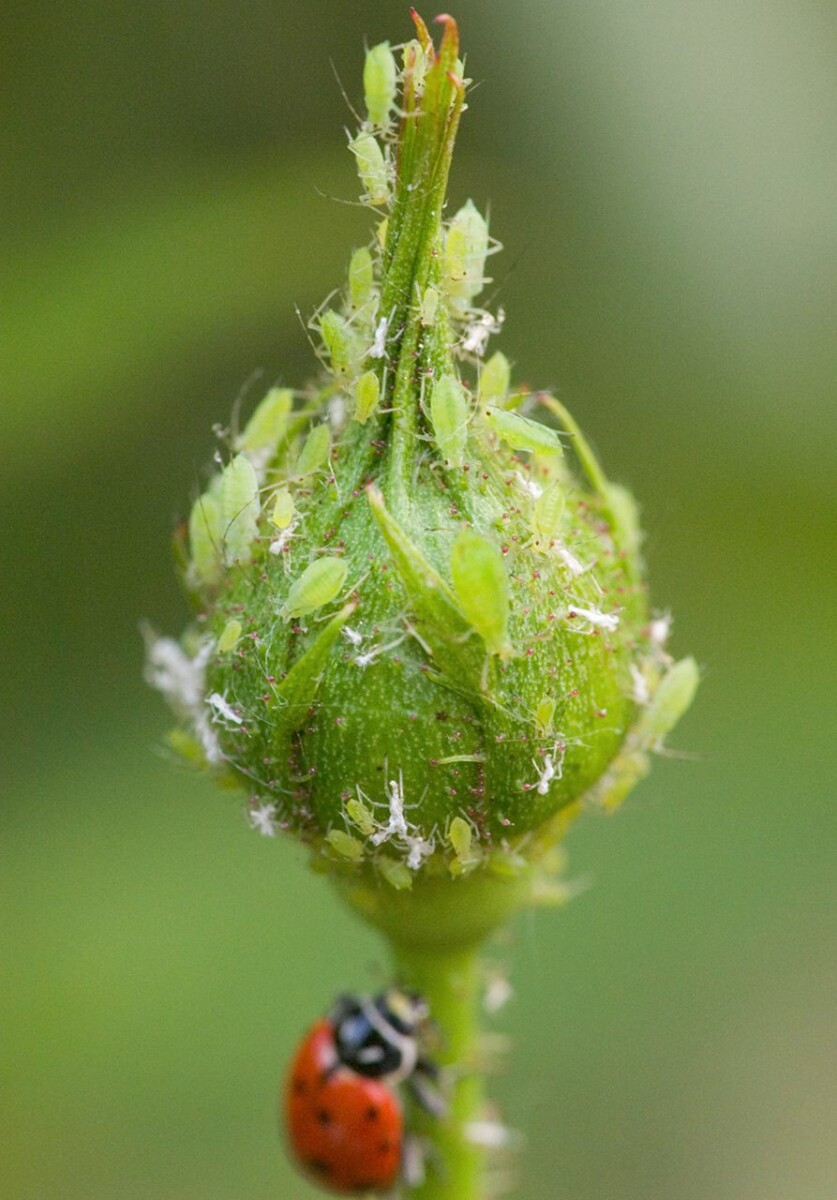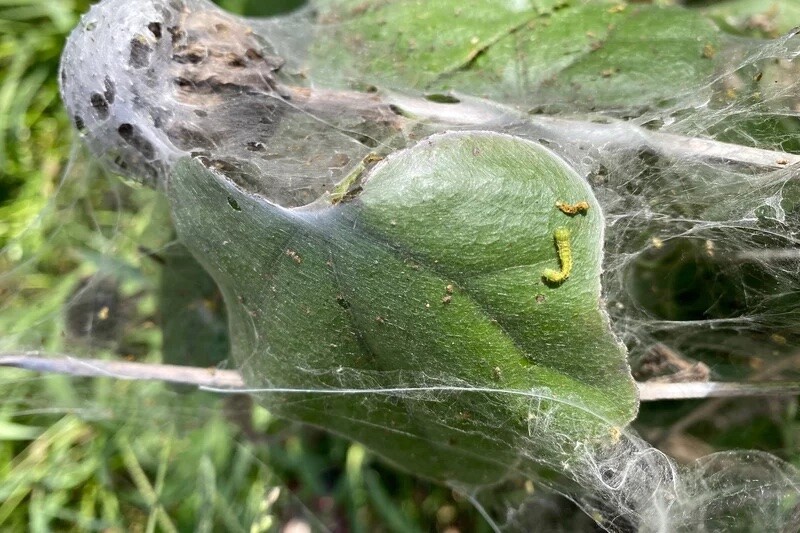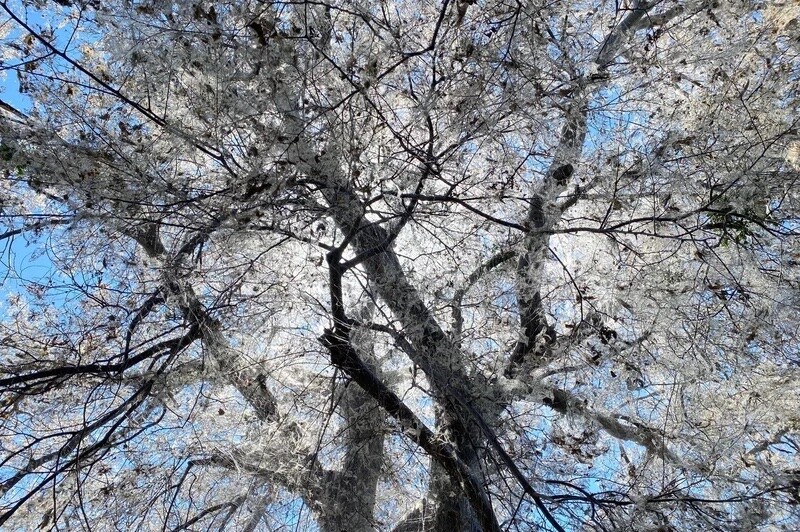
Autumn, Aphids, & Caterpillars, Oh My!
Acclimating to Autumn’s Drought Aftermath in North Texas
This autumn, well, still feels much like an augmented version of our unprecedented summer. Instead of vivid, festive fall foliage, many of this October’s haunting trees don eerie web-like costumes as if they’re dressed for Halloween. Cute, creepy, crawly creatures spin silky structures that adorn their branches. The persistent plunk of pecans hitting our roofs has been replaced by apocalyptic levels of aphids raining down secretions and creating a sticky situation on our streets, sidewalks, and vehicles. Is there a science to this phenomenon or is our planet plummeting swiftly toward peril? Read on to discover how to deal with the ongoing effects of our extensive drought and flooding as we speculate on how this atypical autumn will likely unfold.
The Detrimental Effects of Drought
Reduced Fall Foliage
Texas A & M Forest Service suggests, “A summer without significant rain could lead to autumn without significant fall colors. Despite some late summer rain, much of Texas remains abnormally dry or in some stage of drought, and trees across the state are continuing to show signs of stress.”
Sadly, these canopies in calamity will likely cease to produce such vivid reds, oranges, and yellows we’re accustomed to seeing come November.
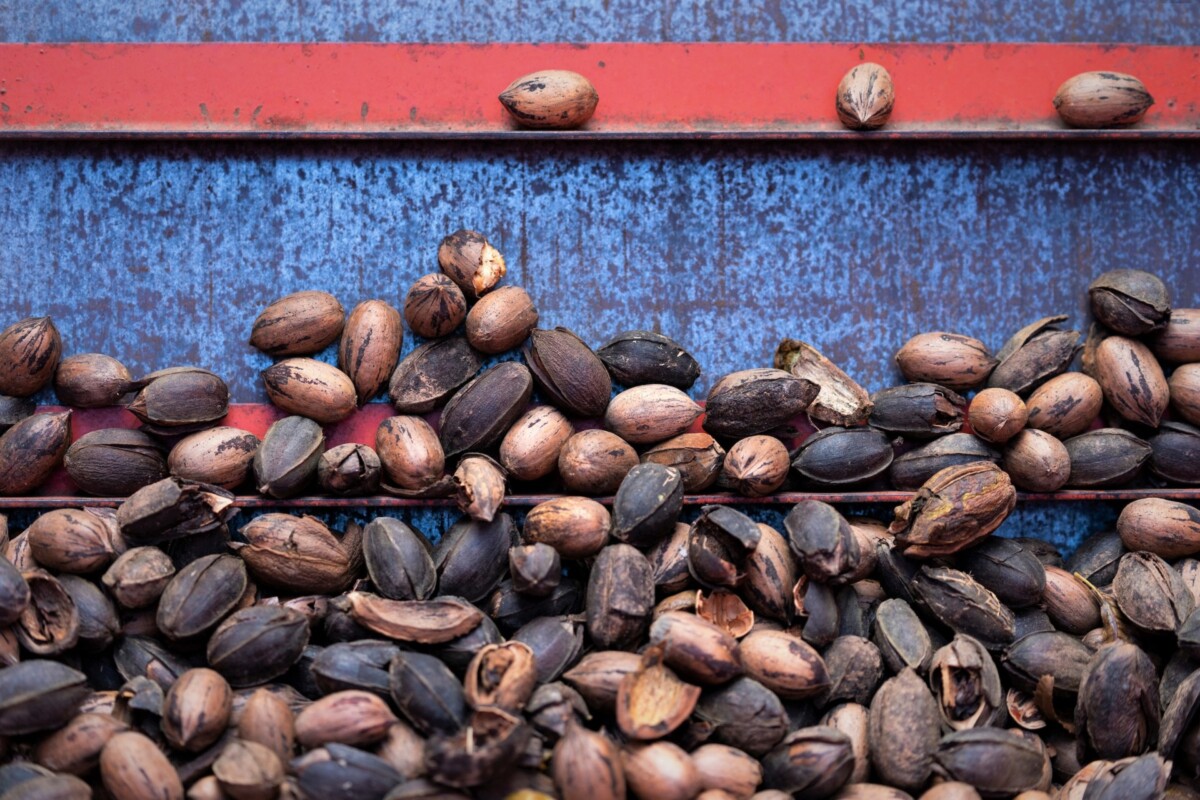
Pecan Production Decline
Additionally, due to our dangerous drought, our Texas pecan trees didn’t receive a sufficient growth season. Farmers and residents alike are discovering a scarcity of nutty showers this fall. The demand for this crunchy crop for pies, pralines, and snacking is high, causing prices to soar. As a result, people will be paying a premium for their delectable desserts this holiday season.
Insect Infestation
Aphids
Aphids, also known as “plant lice” feast annually on agricultural and horticultural crops. Their favorite suitors include chrysanthemums, ash, barberry, boxelder, crape myrtle, jasmine, flowering almond, gardenia, hibiscus, hydrangea, mountain ash, oaks, oleander, peach, pear, pecans, pines, roses, vegetables, and viburnum. Aphids don’t notably cause trouble to healthy plants, but due to this year’s extreme drought and hellaciously high temperatures, these calamitous creepy crawlers multiplied at an alarming rate. In fact, aphids reproduce faster than any other insect. Although their lifespan is only around a month, this hungry colony feasts on the limited supply of luscious leaves, literally leaving our plants lifeless.
Aphids suck sap from plant tissue, foliage, twigs, limbs, branches, fruits, flowers, or roots of plants. Due to this year’s ample aphid population, and overlapping lifecycles, we’re seeing exponential remnants of their exoskeletons adorning plants and trees, often falling in clumps onto our lawns, decks, and patios. But, the stickiest situation is the prolific amount of “honeydew” waste secretions left on our windshields, gravel, streets, and sidewalks.
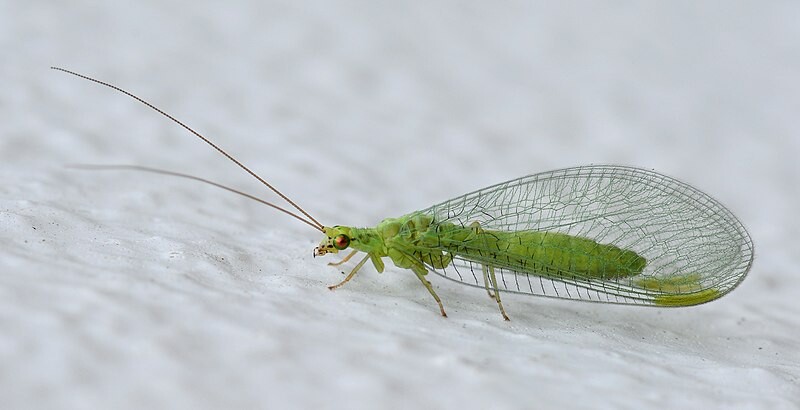
Beneficial Bugs
Never fear, nature is busy combating this phenomenon and we can see it at work through the food chain. Beneficial bugs such as ladybug larvae, praying mantes, parasitic wasps, and green lacewing larvae, help reduce our rampant aphid population
Caterpillars
After August’s unparalleled flooding, which left North Texas submerged in up to sixteen inches of water in less than twenty-four hours, many species of insects were duped into thinking it was spring. Several sneaky web-spinner species such as the hackberry leafroller and cankerworms can be found dangling from doorframes, devouring leaves, and blanketing buildings, shrubs, furniture, and trees in shimmering silky fibers.
The Future of our Trees
While these nibblers are indeed a nuisance, they, along with the aphids, do not present any long-term danger to our plants and trees. Sure, the leaves are riddled with holes bigger than Swiss cheese, but thankfully, with our blustery days ahead, and a hopeful winter freeze, our willowy wanton friends should hopefully return to regular growth in the spring.
Proactive Planning
Here at Bonick, we’re constantly educating ourselves and exploring how to stay proactive as climate change, weather patterns, and phenomenons perplex, challenge, and motivate change. While our arborists can certainly assess and address any potential damaging threats, our best advice rather than combatting the critters is to be patient and allow nature to take its course. Winter will be here before we know it and we’ll be awaiting the next hurdle.
For now, our teams have access to a plentiful supply of pumpkins, gourds, and festive annuals and perennials to adorn your estate for fall. Contact us for a seasonal spruce-up to treat your Halloween and Thanksgiving guests with colorful curb appeal.
Resources:
NBCDFW – Drought and Fall Foliage
Texas A&M Aphids in Landscapes
You may also enjoy:
Dazzle Your Landscape with Fall Color
Five Tips for a Flourishing Fall Vegetable Garden
